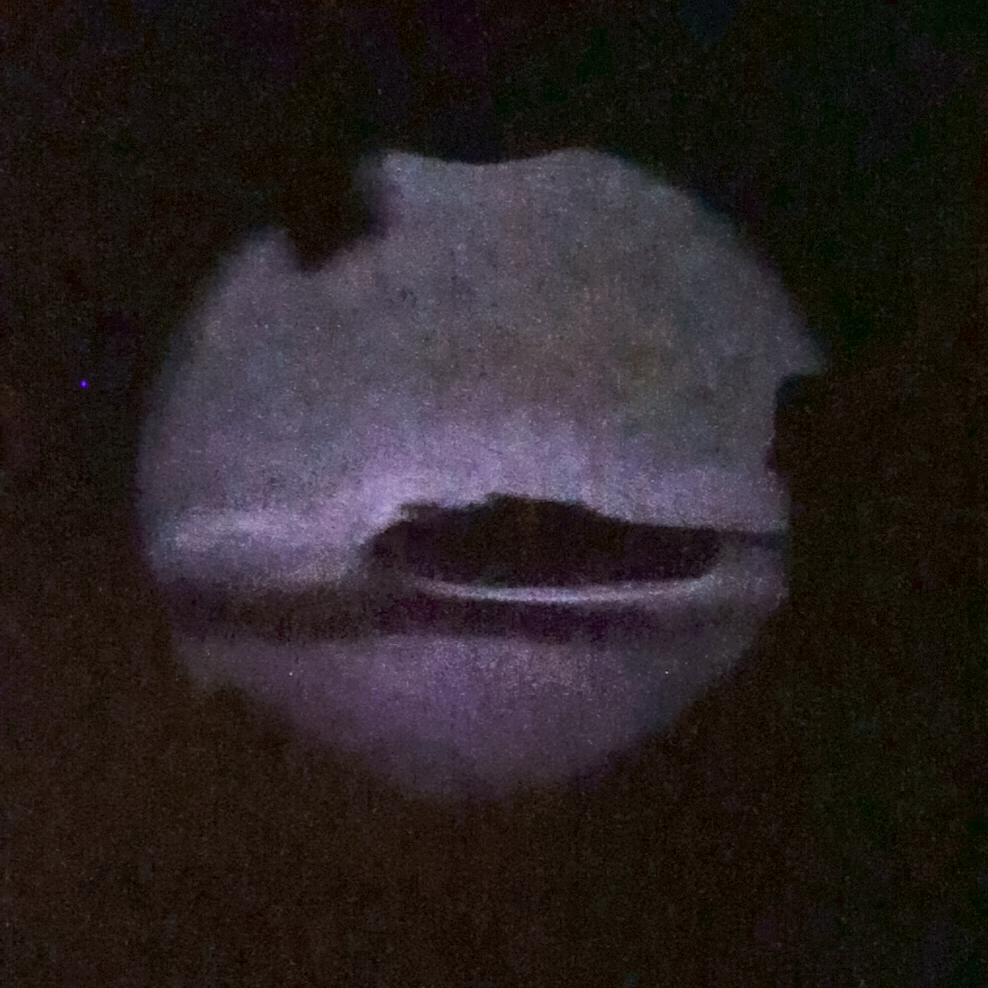This image, captured using Schlieren imagery, depicts hot air from a lighter moving and getting displaced by a 3D printed airfoil. My teammates Duncan and Domenic helped with the setup, lighting, and positioning of the airfoil. The original setup was vertical, but I have rotated the image 90 degrees counterclockwise to represent the physical setup of a real airfoil. The light-to-dark gradient from the top to the bottom of the airfoil shows a density gradient that is consistent with airfoils where hotter, less dense air moves above. Brighter light is bent away from the knife edge, which means that density decreases in that direction, which in turn means that the darker areas of the image will show high-density air.
Hot Air Forming Boundary Layer Around Airfoil – Schlieren Imagery
Categories
Flow Vis Guidebook
- Introduction to the Guidebook
- Overview 1: Phenomena. Why Does It Look Like That?
- Overview 2: Visualization Techniques
- Overview 3: Lighting
- Overview 4 - Photography A: Composition and Studio Workflow
- Overview 4 - Photography B: Cameras
- Overview 4 - Photography C: Lenses - Focal Length
- Overview 4 - Photography C: Lenses - Aperture and DOF
- Overview 4: Photography D: Exposure
- Overview 4 - Photography E - Resolution
- Overview 5 - Post-Processing
- Clouds 1: Names
- Clouds 2: Why Are There Clouds? Lift Mechanism 1: Instability
- Clouds 3: Skew - T and Instability
- Clouds 4: Clouds in Unstable Atmosphere
- Clouds 5: Lift Mechanism 2 - Orographics
- Clouds 6: Lift Mechanism 3 - Weather Systems
- Boundary Techniques - Introduction
- Dye Techniques 1 - Do Not Disturb
- Dye Techniques 2 - High Visibility
- Dye Techniques 3 - Light Emitting Fluids
- Refractive Index Techniques 1: Liquid Surfaces
- Refractive Index Techniques 2: Shadowgraphy and Schlieren
- Particles 1- Physics: Flow and Light
- Particles 2: Aerosols
- Particles 3: In Water
- Particles 4 -Dilute Particle Techniques
- Art and Science
- TOC and Zotpress test
- Photons, Wavelength and Color


2 Comments. Leave new
Very cool image! I like the crop around the subject and how you selected this frame of the video. I also like how you rotated the image to get the airfoil horizontal.
Cool Schlieren image Beck! Do you think that the unsteady flow created by the lighter would affect your image at all? I used background oriented schlieren to image the airflow created by a lighter and found that it waved back and forth.